
By Doyle Sumrall
NTEA Managing
Director
doyle@ntea.com
This article was published in the October 2015 edition of NTEA
News.
As NTEA regularly interacts with both current and
prospective members, the Association is noticing more and more new professionals
in the work truck industry. Some of these contacts have transitioned to truck
equipment from different fields, while others are shifting from one segment to
another. In addition, many are new to the workforce and face the added pressure
of learning both the job and industry. For this reason, NTEA receives requests
for reference materials explaining key elements of the work truck industry,
including common terms and history. This overview highlights basic tips and
helpful links.
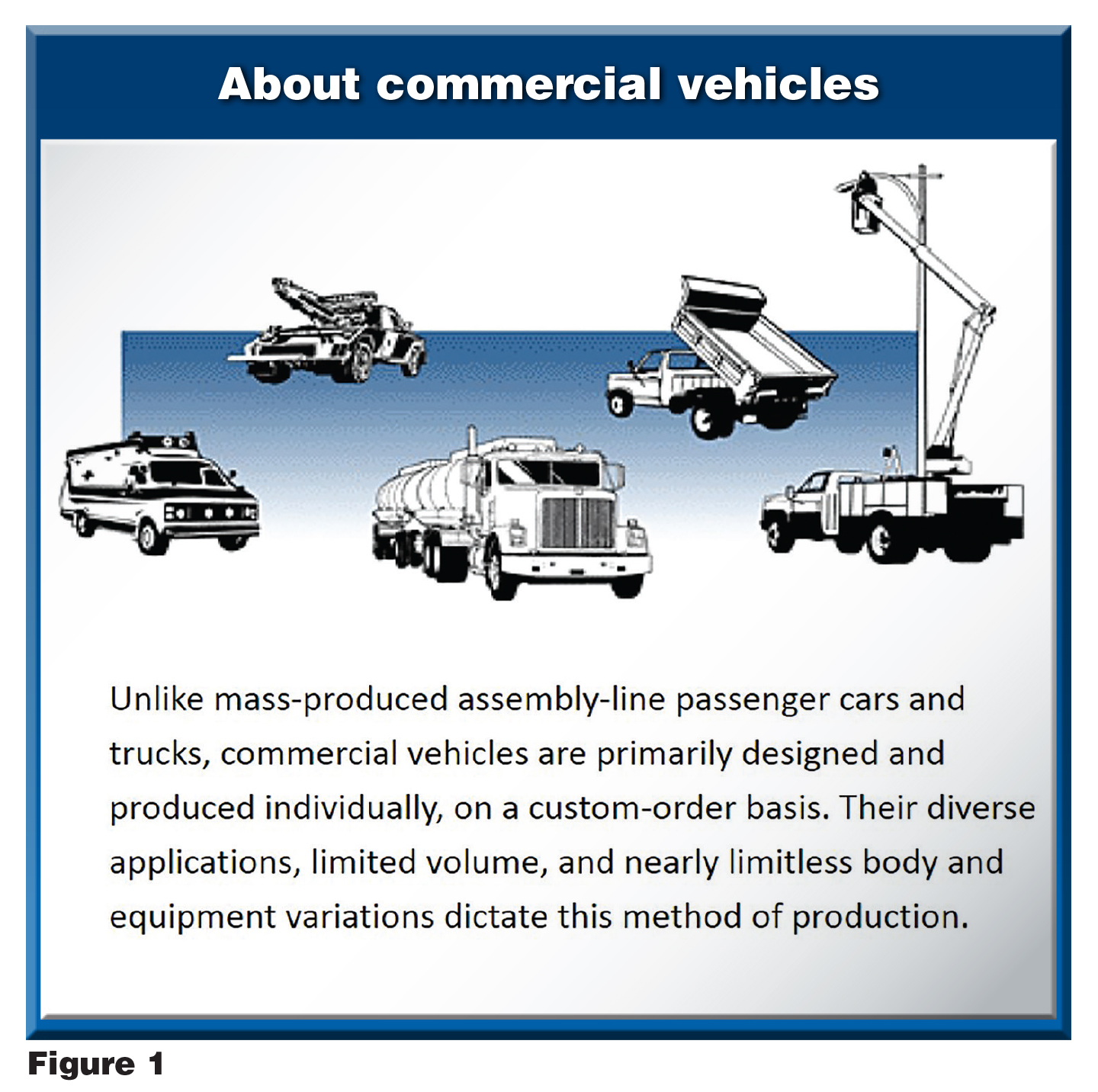
NTEA offers a variety of beneficial resources, such as
the Truck Equipment Handbook which covers
everything from basic terms to more technical elements like Federal Motor
Vehicle Safety Standards and the Bridge Gross Weight Formula.
One of the most important concepts for industry
newcomers to recognize is that each work truck is generally a unique build.
In essence, vocational trucks serve as a tool for the owner to
accomplish a given job. Commercial vehicles come in all shapes and sizes and
include a wide variety of additional equipment to fulfill needed
capabilities.
In Truck Equipment 101, an educational course being revamped by NTEA
and its Generation Next group, the many terms and fundamental elements of the
commercial vehicle industry (see Figure 2 are explained in detail. Look for a
new version of this training program in 2016, and see all of the courses
currently offered by NTEA, at ntea.com/eventsandtraining.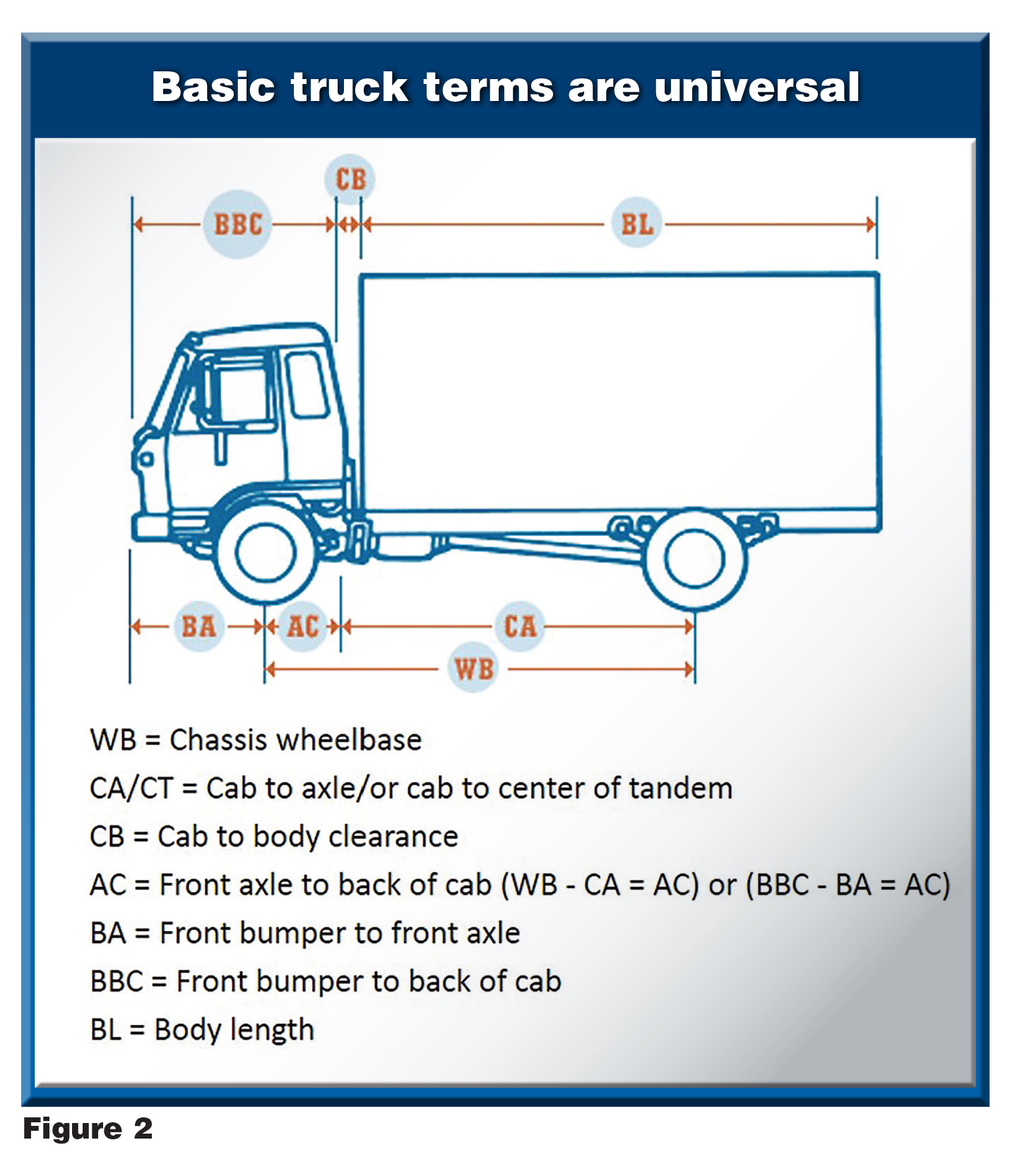
Each body and equipment type has its own unique terminology, making the
acclimation process almost like learning a new language (see Figure
3).
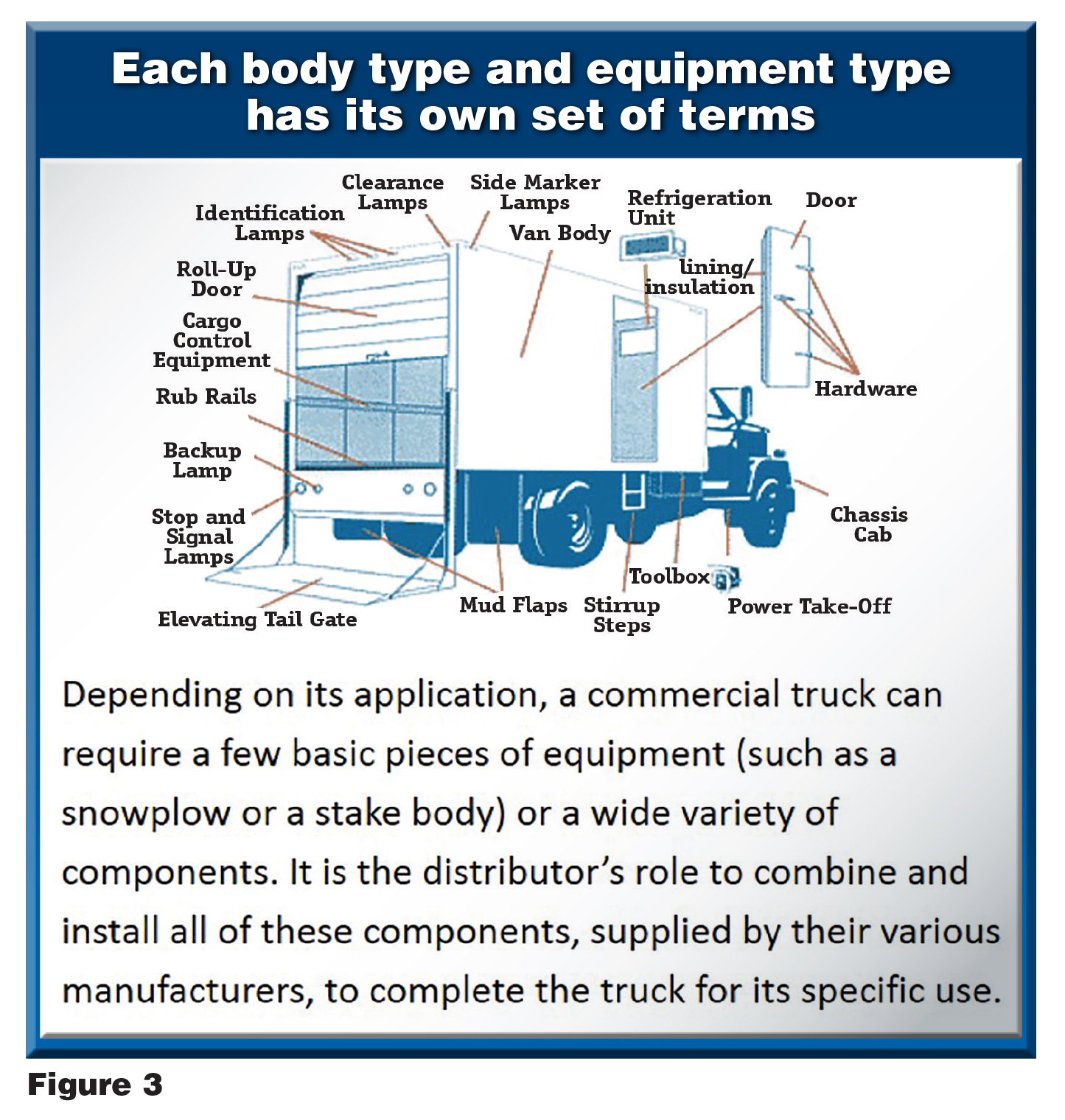
Generation Next
NTEA’s Generation Next group
seeks to support new industry professionals in developing their
skills and
building peer relationships. Membership is free to employees of NTEA member
companies who have been in the industry less than 10 years. Participants
represent all spectrums of the industry, from small and large companies;
distributors, manufacturers and industry-related suppliers; and job titles from
technician to sales rep, manager to president. Visit ntea.com/generationnext to
learn more.
Industry structure
Typically referenced in terms
of the commercial segment of the transportation industry, the market is composed
of chassis, body and equipment sales. For the most part, the industry follows a
directional trend similar to chassis sales as the number of bodies and equipment
sold without a chassis is negligible.
The value chain is complex and does not follow the more
common relationships between product manufacturers, distributors and retailers.
As stated earlier, these products are all customized to some degree, and the
entire value chain, including the end customer, works together to develop a
solution — which, in this industry, is a truck.
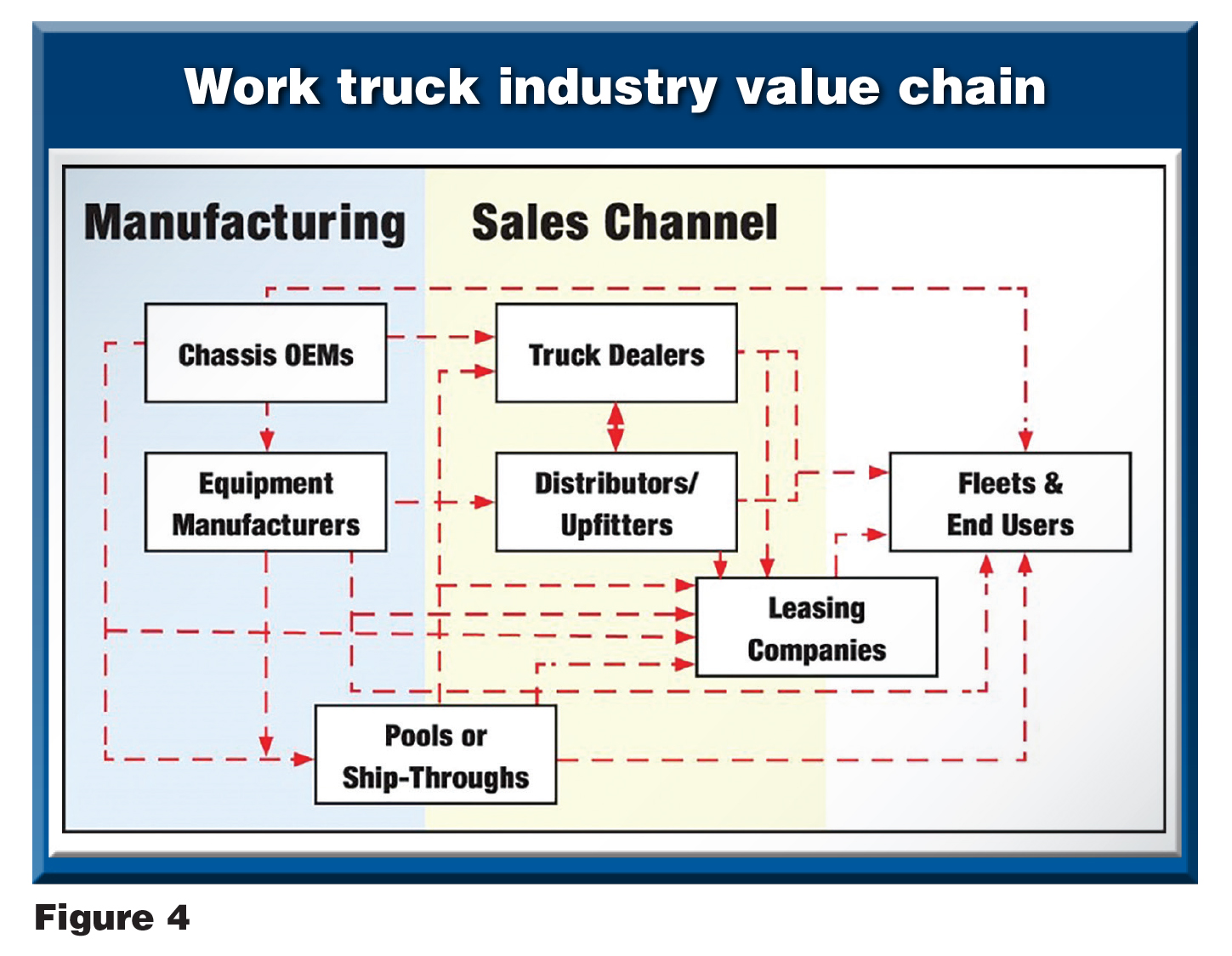
The commercial vehicle market is significant, representing thousands of
unit sales each year, amounting to an estimated $133,965,800,000 for
2015.
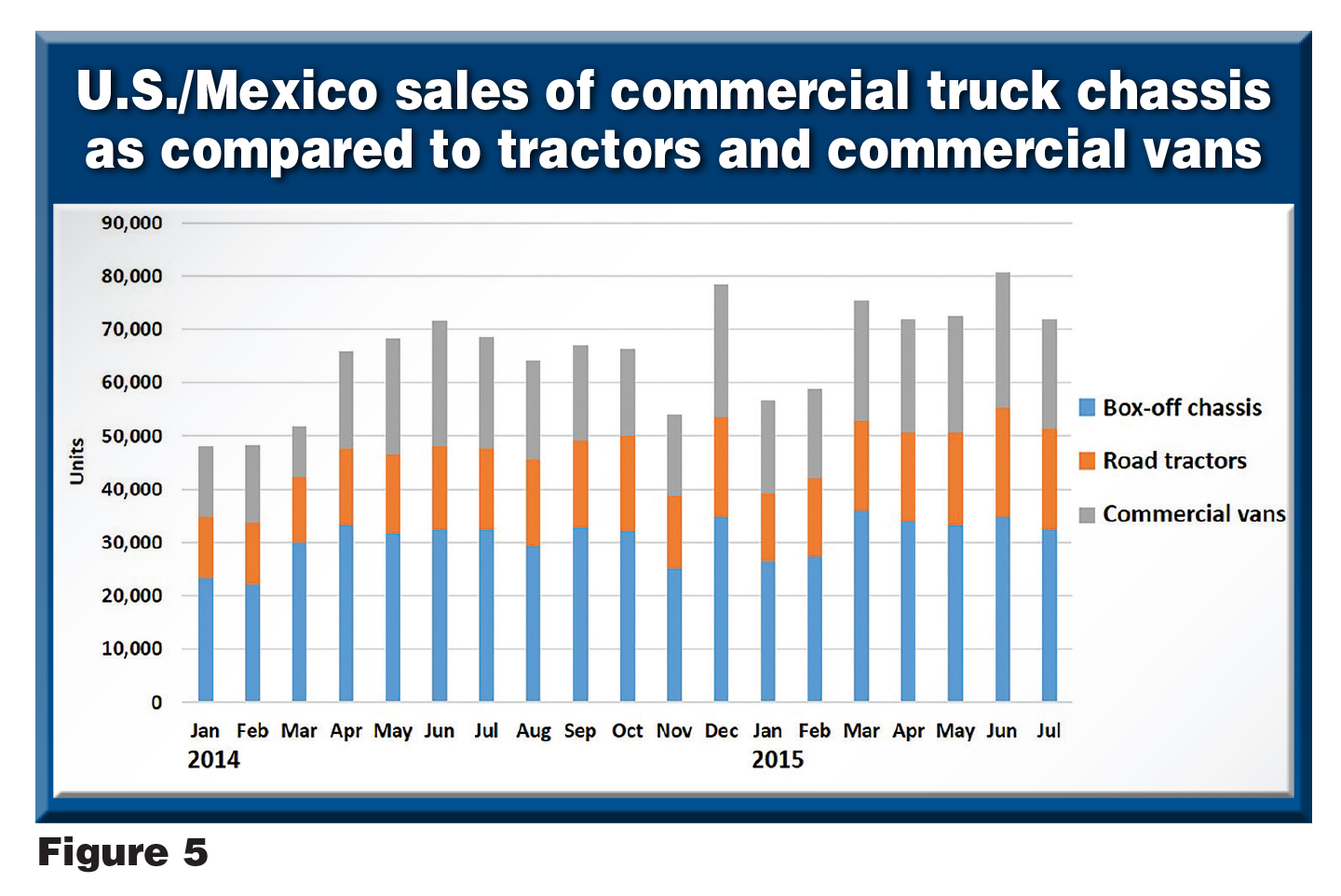
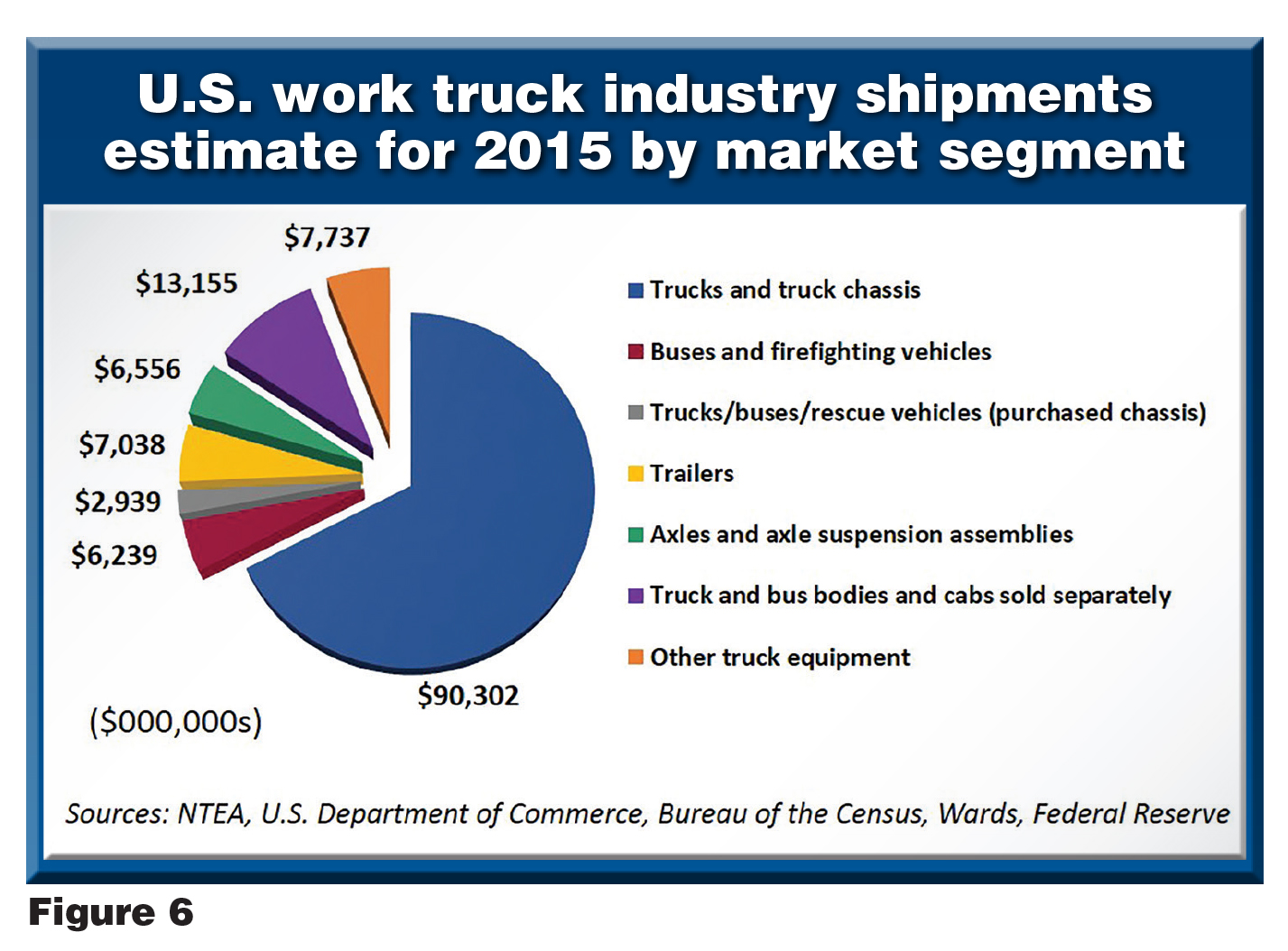
Market data
On ntea.com, members can access a
variety of NTEA-generated industry statistics, as well as analysis from leading
information providers, such as IHS Global Insight. This information can help
you:
- Understand your market (both
existing and potential customers)
- Assess changes in the business
environment that may affect the size and nature of specific industry
segments
- Determine current and future
market needs and preferences, attitudes and behavior
Members can visit ntea.com/marketdata and login
to access the following. For assistance with your member username and password,
contact NTEA Membership Coordinator Emily Hooks at 248-479-8154 or emily@ntea.com.
- OEM Monthly Chassis
Report — Offers insightful analysis into the most current
monthly box-off truck chassis and commercial van shipments and sales data
provided to NTEA by OEMs.
- Monthly market data
updates — Includes reports and analysis from NTEA and other
sources on industry influencers like metals prices, housing starts, fuel prices,
and additional box-off shipments and sales data.
- Market Intelligence
articles — NTEA’s comprehensive library of articles provides
analysis of relevant industry and economic data, and what it means to your
business.
- Quarterly Commercial Vehicle
Report — NTEA presents IHS Automotive Driven by Polk: Quarterly
Commercial Vehicle Reports. As a benefit to members, the Association has
negotiated an agreement making the Report accessible on ntea.com.
- Annual U.S. Commercial Truck
Industry Forecast — Detailed chart provided by top-rated
economic analysis and consulting firm IHS Global Insight predicts future gross
domestic product growth for retail commercial truck sales.
For questions or more information on Association resources for new —
and longtime — industry professionals, call NTEA at 800-441-6832 or visit
ntea.com.
Doyle Sumrall can be reached at 330-283-2176 or
doyle@ntea.com.